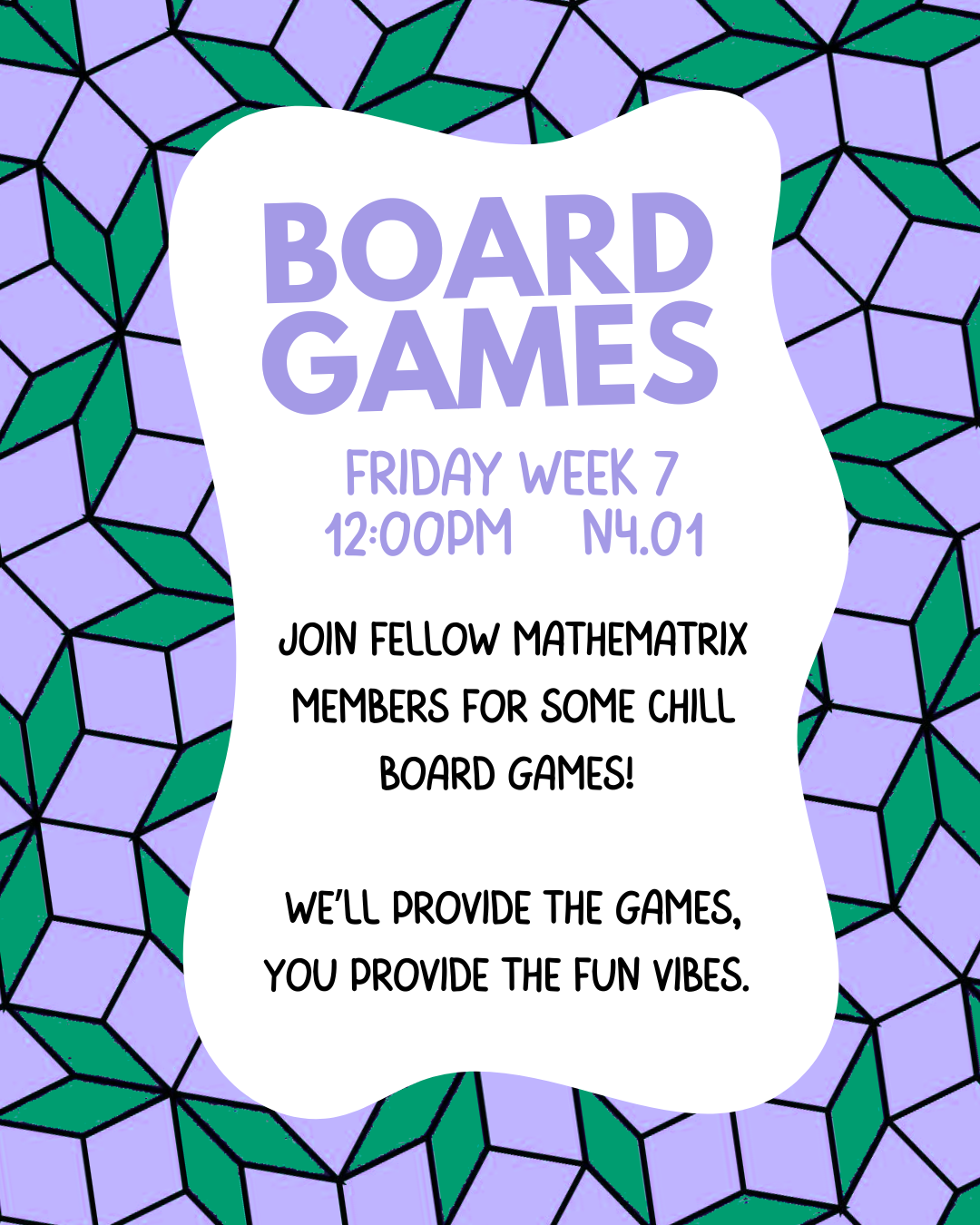16:00
Large deviations for the Riemann zeta function on the critical line
Abstract
In this talk, I will give an account of the measure of large values where |ζ(1/2 + it)| > exp(V), with t ∈ [T,2T] and V ∼ αloglogT. This is the range that influences the moments of the Riemann zeta function. I will present previous results on upper bounds by Arguin and Bailey, and new lower bounds in a soon to be completed paper, joint with Louis-Pierre Arguin, and explain why, with current machinery, the lower bound is essentially optimal. Time permitting, I will also discuss adaptations to other families of L-functions, such as the central values of primitive characters with a large common modulus.
Mathematrix: Board Games!
Abstract
Join us on Friday Week 7 for some chill board games! Meet in N4.01 at 12pm for a Taylors sandwich lunch and positive end-of-term vibes.

Did you know, you can access free, introductory training on using ChatGPT Edu from in-house specialists?
A regular series of beginner-friendly, 90-minute sessions to help you get started with AI is available online and in person, on an ongoing basis. Over 1,200 staff and students across the University and Colleges have already taken this training, with 97% giving four- or five-star reviews.
Where on earth is the best laboratory to demonstrate the beauty of fluid dynamics?
Actually it’s not on earth. Here is the story of the soft cell. Read more here!

